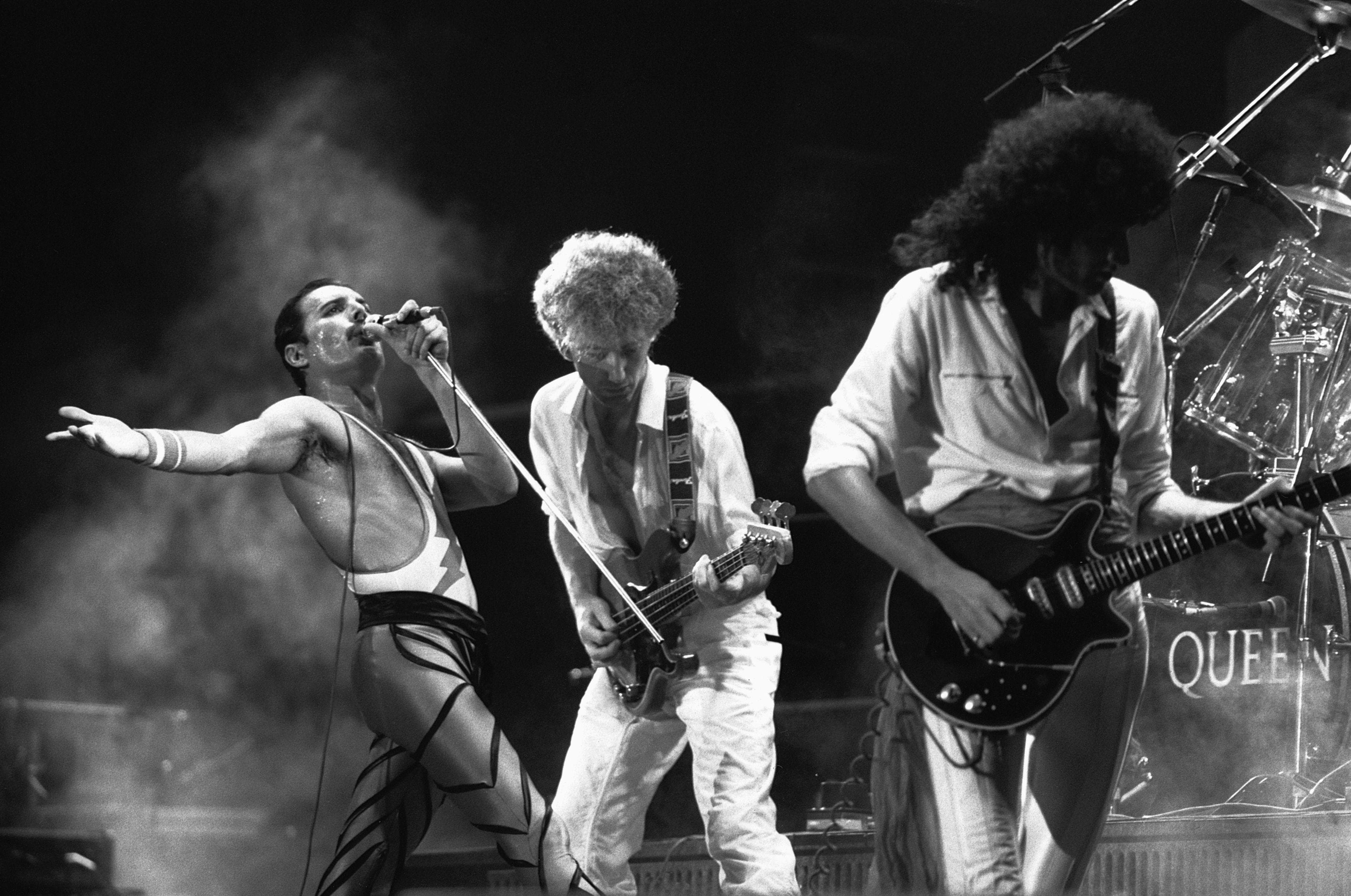-
(#1) The Infamous ‘Leg Bag’ Was A British Innovation That Performed Disastrously On D-Day
Many American paratroopers jumping before D-Day opted to stow some of their gear in a British-made "leg bag" that would be attached by a 15-foot rope and could dangle below the trooper once the parachute had deployed. The bag would, in theory, hit the ground before the paratrooper did, allowing him to quickly gather his gear. As Stephen Ambrose explains:
It seemed sensible, but no one in the American airborne had ever jumped with a leg bag. The Yanks liked the idea of the thing, and stuffed everything they could into those leg bags - mines, ammunition, broken-down Tommy guns, and more.
Unfortunately, it didn't work out so well in practice. Because of the intense anti-aircraft fire encountered by allied aircraft, the pilots didn't slow down to the recommended airspeed for a jump. Most of the paratroopers exited planes that were flying much too fast, which meant the men encountered large amounts of turbulence as they came out. Ambrose writes:
As they left the plane, the leg bags tore loose and hurtled to the ground, in nearly every case never to be seen again. Simultaneously, the prop blast tossed them this way and that. With all the extra weight and all the extra speed, when the chutes opened, the shock was more than they had ever experienced.
Indeed, the 101st Airborne's paratroop deployment on the night before D-Day was almost a textbook example of Murphy's Law. It's remarkable that the paratroopers were able to regroup as well as they did and accomplish their mission.
-
(#5) Lt. Jones’s West Point Ring Was A Ticket To Success In The Army
Season 1, Episode 8, "The Patrol," introduces Lt. Hank Jones, a fresh-faced new officer who is eager to see some action before the war ends. He identifies himself as a member of the West Point class of 1944 - having graduated in the same class as General Eisenhower’s son, John, on June 6 (coincidentally the day of the Normandy Invasion).
Close-ups of Lt. Jones’s hand call attention to his West Point class ring, which, the book implies, was a ticket to bigger and better things in the Army - or at least was perceived as such by rank-and-file soldiers:
Within a week, Jones was gone, having been promoted to 1st Lieutenant. “After one patrol!” Lieutenant Foley commented. “Jones was a West Pointer, a member of the WPPA, the West Point Protective Association, known by the ring they all wore. ‘It don’t mean a thing if you don’t have that ring!’”
-
(#8) Captain Nixon’s Preferred Scotch, Vat 69, Can Still Be Bought
In both the series and the book it’s based on, Dick Winters’s closest friend, Lewis Nixon, is depicted as both an Ivy League man and an alcoholic. He’s often seen with a bottle or a glass of booze in hand, and he expresses frustration when he can no longer get access to his favorite brand of scotch - Vat 69 - in Germany. Winters makes it up to Lewis by essentially handing him the keys to Hitler’s private stash in a huge cellar at Berchtesgaden.
Vat 69 is, of course, a real brand, although it’s not as well-known in the US as it was in Nixon’s time. Its popularity among university students of Nixon’s generation can perhaps be seen by the fact that the Princeton graduating class of 1939 dubbed themselves the "Vat 39s."
You can still get Vat 69, though you might have to hunt around a bit. It’s not considered to be a great whiskey; “good for the price” seems to be the general feeling.
-
(#6) Sand Tables Were 3D Maps That Recreated Combat Areas, Kind Of Like Tabletop Wargames
Shortly after landing in Normandy, Lt. Winters makes an offhanded comment that he is able to navigate because he studied the "sand tables." We briefly see these tables in an earlier scene, before the invasion has begun, as officers are briefed about mission objectives.
Sand tables are simply walled tables filled with sand that can then be molded to approximate, in three dimensions, the terrain on a map. Eric Milzarski, a veteran of the 101st Airborne who served in Afghanistan, notes that sand tables are a quick and easy way to familiarize soldiers with aspects of a coming mission:
[It] gives each and every person watching the demonstration a bird’s eye view of what’s supposed to go down. An observer can either take it all in or just hone in on their own marker. Either way, the sand table allows everyone to focus on something in physical space instead of just zoning out while staring toward a dry-erase board filled with scribbles.
It also gives the viewer a chance to take part in the preparation, and taking an active role helps increase information retention. For example, you can give the platoon leader the “first platoon rock” and have them act out their mission.
Sometimes, officers even use little toy soldiers to indicate unit positions on sand tables. It's probably not surprising that such tables are also commonly used by hobbyist wargamers. As has been the case for centuries, "real" war and "pretend" war are closely intertwined.
-
(#4) Blousing Your Trousers Was A Big Deal For A Paratrooper, And Not Done Lightly
Band of Brothers makes it clear that "blousing" one's trousers (tucking them inside the boots) was something that only paratroopers who had graduated jump school could do. Early in the first episode, Capt. Herbert Sobel sternly reprimands one trainee just because the folds in his trousers show that he bloused them in the past. Stephen Ambrose elaborates:
Like all elite units around the world, the Airborne had its unique badges and symbols. Once through jump school, they would receive silver wings to wear on the left pocket of their jackets, a patch for their left shoulder, a patch for their hats, and the right to wear paratrooper boots and "blouse" their trousers (tuck the trousers into their boots).
Unlike most Army boots of the time, paratrooper boots were calf length and completely leather. Wearing them conferred prestige, and they were highly sought-after items. German soldiers came to fear anyone who wore those boots and bloused their pants, calling American paratroopers "devils in baggy pants."
-
(#2) The Spades And Clovers Painted On Helmets Were Part Of A System To Identify Units By Card Symbols
Watching Band of Brothers, one might wonder why so many characters have card symbols stenciled on their helmets - most commonly spades. In fact, there were many different symbols used on the helmets of paratroopers who dropped into Normandy the night before D-Day.
The symbols were meant to designate a soldier’s unit, so they would be able to regroup more easily. Spades are common on the Band of Brothers helmets because the spade was the symbol of the 506th Parachute Infantry Regiment, of which Easy Company was a part. The symbol for the 501st was a diamond, while soldiers of the 502nd were identified by a clover.
There were other symbols, too - circles to denote artillery, and squares for members of Divisional HQ. Further subdivisions could be identified by reading little "ticks" (like clock hands) positioned in the 12 o’clock, 3 o’clock, 6 o’clock, and 9 o’clock positions around the central symbols.
In all, it was a rather bewildering array of iconography - but a soldier was well advised to be able to make sense of it, particularly given the chaotic and disorganized reality of the parachute drops on the night of June 5-6.
New Random Displays Display All By Ranking
About This Tool
Our data comes from Ranker, If you want to participate in the ranking of items displayed on this page, please click here.














